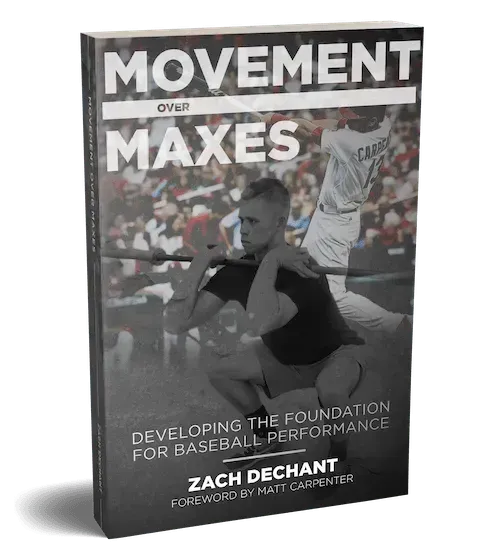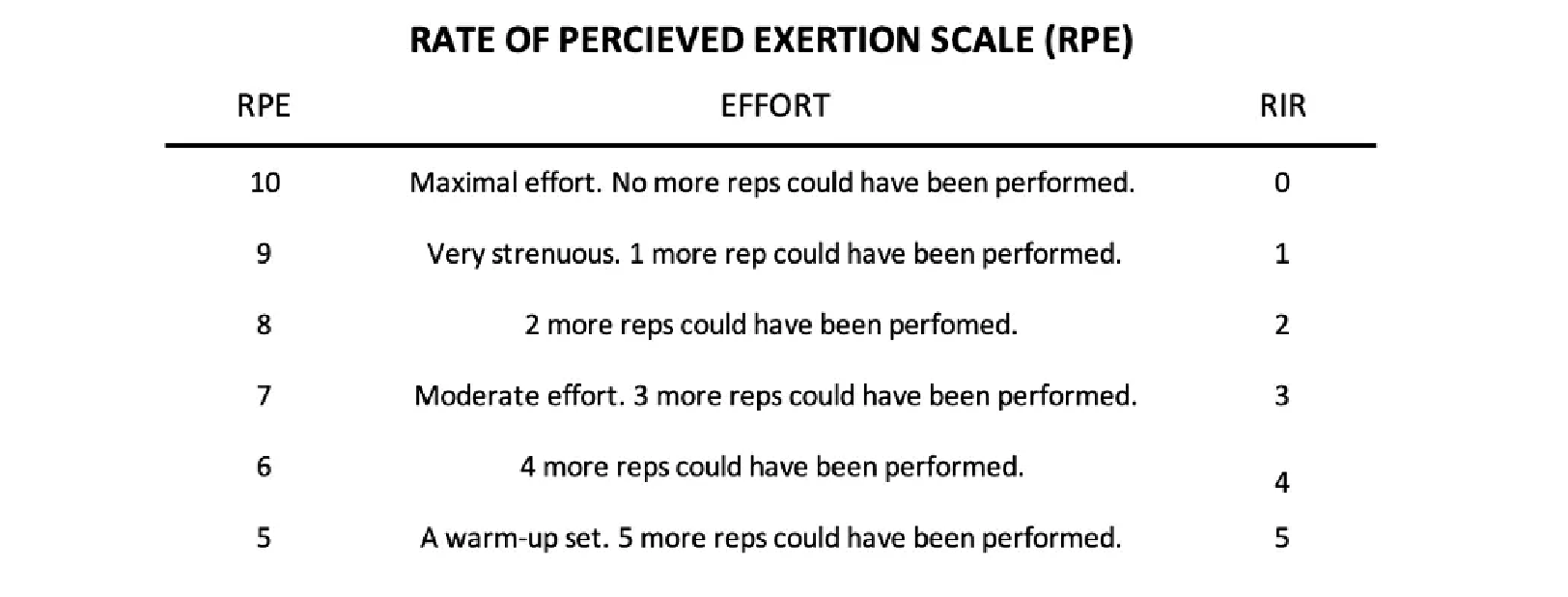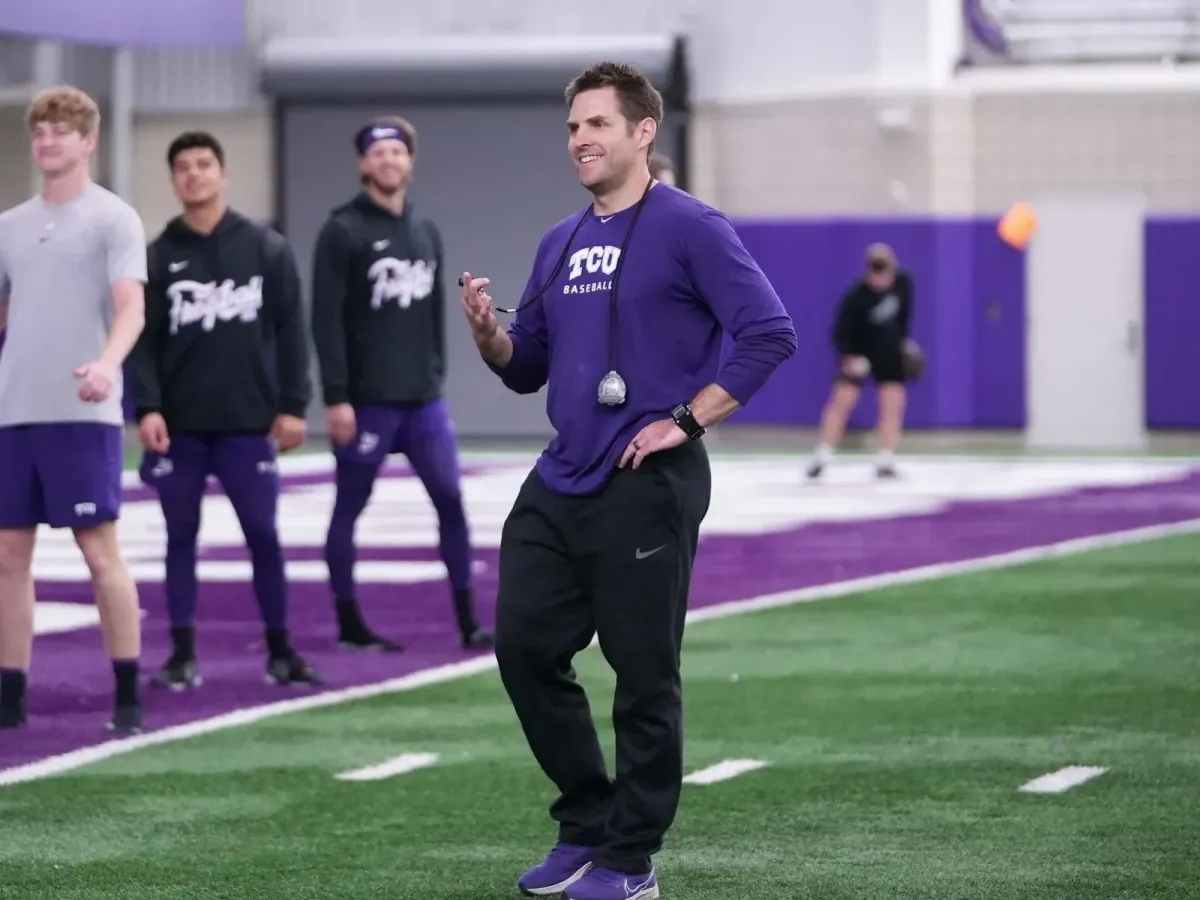Free Pitcher's Training eBook Reveals
How To Develop Athletic Pitchers And Train Them With An
Emphasis On Speed, Power & Movement

...and they must be treated as such. The act of pitching is an explosive, total-body movement.
There is nothing slow about it. Thus, our
overarching goal in training pitchers is to make
them fast, powerful, and explosive -- so that's how
they should train.
However, several factors separate pitchers from the rest of the team and these should be taken into account when developing a training program.
In this PDF eBook, you're getting the complete, individualized strength & conditioning approach utilized to assess, develop and train athletic pitchers that move explosively.
Movement Over Maxes
Developing The Foundation for Baseball Performance

"If you want to improve your program and give your athletes a winning edge, this book is a must!"
Movement Over Maxes is a Foundational Program that serves as the starting point for any athlete. It functions as a guide for all coaches to begin to understand and implement basic movement patterns with a long-term development approach.
This was created for the coach who wears every hat for their program... The coach who mows the grass, drags the infield, handles the equipment, AND trains the athletes! This is for the coach who devotes their life to not only creating better baseball players, but growing boys into men through the sport.

RPE and RIR vs. 1RM
Blog is written by current Coach with TCU Sports Performance, Andrew Behnam.
It is not uncommon to see or hear about a team designating a training session for maxing out. This is the day where players and coaches alike might do things out of their normal routine in an attempt to lift the heaviest weight possible and set new working percentage for their program. There are both pros and cons to maxing out. To see the reasons why we don’t max in our program, check out this article: Where Have All the Max Days Gone.
Instead of taking out a whole training session to max, we use the Rate of Perceived Exertion (RPE) scale or Reps In Reserve (RIR) with our foundation athletes and calculate the estimated 1RM to track individual progress. The RPE scale is a subjective 1-10 scale that allows the athlete to communicate how difficult they felt their set was based on the load. An RPE of 5 indicates moderate difficulty similar to a warm up, whereas an RPE of 9-10 indicates maximal effort. RIR on the other hand, is a measure of how many reps the athlete had left in the tank. These two terms can be used interchangeably. For example, an RPE of 7 would also signify an RIR of 3.

This past fall I got a first hand look at classifying exertions such as RPE/RIR with our foundation program. We solely used RPE ratings to determine individual load and maxes throughout the fall program. The gains that we saw were incredible over the course of the 15-week program. With percentage based programs, some athletes may fail to complete the designated training while other athletes may need more than what was programmed for that day. Because the RPE/RIR based loading system is subjective, I wanted to discuss its accuracy in determining actual 1RM’s. I ended up finding a few studies to share that tested its accuracy with trained subjects.
A study by Odgers et al. tested the accuracy of intra-set RPE and RIR ratings in well-trained males and females to predict actual 1RM. In the first of three sessions, subjects performed a 1RM test for the front squat and trap bar deadlift. Two days later in session two, subjects performed four sets of 80% 1RM on one lift until failure. During the set, the subjects indicated when they thought they were at a 6 RPE (4 RIR) and a 9RPE (1 RIR), respectively. In the last session, subjects performed the same test with the other lift that had not yet been completed.
During the sets to failure, the RPEDIFF was recorded (actual repetitions – predicted repetitions) and written down. A lower RPEDIFF indicated less variance between the actual repetitions and the RPE given. As explained in the study “if a subject reported a 9 RPE after the seventh repetition (i.e., predicted they could do 8 repetitions), but actually completed 10 repetitions, then the investigator recorded an RPEDIFF of 2 (10–8).” (Odgers, et al. 2021).
In both the trap bar deadlift and the front squat, the subjects were reported as having lower RPEDIFF at the 9 RPE than the 6 RPE. Bar velocity was measured during the study as well, otherwise known as average concentric velocity (ACV). A near perfect inverse relationship was reported with ACV and RPE. The hypothesis made at the beginning of the study was confirmed that RPE based programming can be an effective method of loading for athletes in determining 1RM.
One of the most important things coaches can do before implementing this style of loading is to educate the athletes on what RPE actually means. As the weeks went on, our foundation guys became more in-tune with their bodies and how they felt on a day to day basis. They would give an RPE and the weight they used on their last compound set to our interns, who would then record that number for tracking purposes. If an athlete hit 265 on a front squat for an RPE of 8 and then three weeks later hit that same number for an RPE of 6, we know the athlete got stronger.
A typical 3 week block with RPE’s for our foundation programming looks something like this:

This is an example of a block that might come in the later part of the semester. Once guys have a better idea of the RPE scale and trust has been earned, we start giving them bigger ranges of RPE’s to work from. This allows the athletes to have little bit more control over their working sets for the day. Once our athletes graduate from the foundation program at the end of the semester, they start on a percentage based program with their training max.
RPE based training is not the end-all-be-all for training foundation athletes. It is important to find the best method that works for you, your athletes, and the situation you are in.
Banyard, H. G., Nosaka, K., & Haff, G. G. (2017). Reliability and Validity of the Load-Velocity Relationship to Predict the 1RM Back Squat. Journal of strength and conditioning research, 31(7), 1897–1904.
Odgers, J. B., Zourdos, M. C., Helms, E. R., Candow, D. G., Dahlstrom, B., Bruno, P., & Sousa, C. A. (2021). Rating of Perceived Exertion and Velocity Relationships Among Trained Males and Females in the Front Squat and Hexagonal Bar Deadlift. Journal of strength and conditioning research, 35(Suppl 1), S23–S30.
Andrew Behnam is currently a strength and conditioning coach at TCU working with the baseball team. Before arriving at TCU, Andrew pitched in college for 4 years, and made stops at Millersville University and Villanova University where he worked as a performance coach. You can follow Andrew on social media:
Instagram – https://www.instagram.com/ajbehnam1/
Twitter – https://twitter.com/ajbehnam1?lang=en
CONNECT WITH ZACH ON TWITTER
ABOUT ZACH DECHANT
Zach has been in place since 2008 at TCU and is the current Assistant Athletic Director of Human Performance. He oversees the development of Baseball. Alongside those priorities he also handles the development and implementation of the TCU Sports Performance Internship Program that has been in place for over 15 years. Over that time the internship program has encompassed 40+ semesters and 250+ intern coaches that have moved on to all levels of professional, collegiate, high school, and private strength and conditioning.
During baseball off-seasons, Coach Dechant trains a group of 30+ current MLB / MiLB Frogs. The pro Frogs spend 4 months back on campus training for the upcoming season...


©️ 2024
